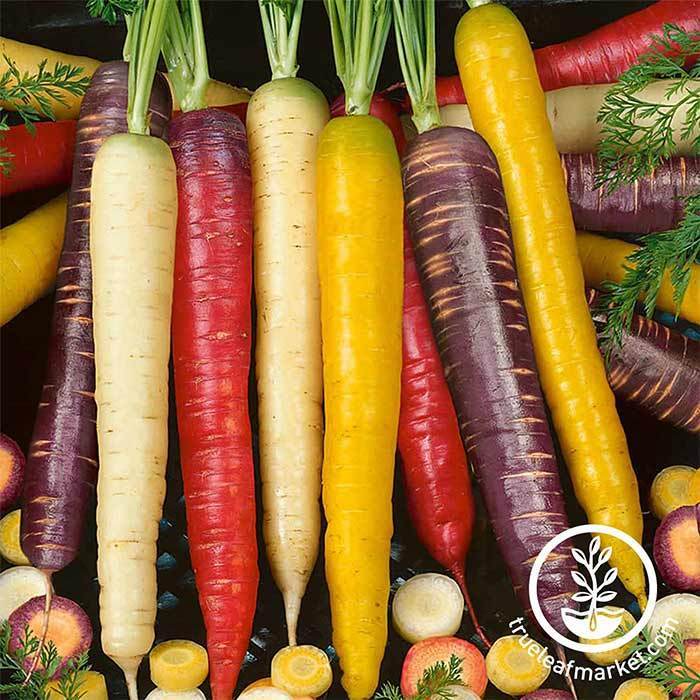If you have experienced lingering winter weather or just didn’t get your garden in earlier in the season, don’t worry. It isn’t too late for you to start growing. Below are several flowers, vegetables, and herbs perfect for summer sowing. Many of these recommendations are quick to mature and great for succession sowing to harvest throughout the summer and fall seasons. Each of these may be sown through late June/early July or August/September when temperatures start to cool again. Keep in mind that your mid-summer sown vegetables may take slightly longer than their recommended days to maturity as the days are getting shorter with the approach of fall. There is nothing like using freshly harvested vegetables and herbs for your Thanksgiving and Christmas feasts!
Flowers for Summer Planting
Adding some extra flowers around the garden is the perfect way to add visual interest to the sea of green foliage. Plus, growing flowers alongside your vegetable will help boost pollination and attract friendly insects. These flowers are some of the best for starting during the summer growing season. Sunflowers are one of my go-to types as they are drought-tolerant and add a vibrant bloom. Try growing an assortment of flowers, as they can also be cut for short-term table decorations.
Summer Sowing Vegetables for a Fall Harvest
The key to sowing vegetables mid-summer is to grow short-season crops. Just be sure to be aware of your high summer temperatures that may affect the varieties you choose or where you grow. Many vegetables that are quick to mature prefer cooler temperatures and can be burned by the intense summer sunlight. Don’t let that scare you off, instead plant these types in part sun locations as they tend to be cooler and help prevent early bolting (flowering).
Leafy Greens
Leafy greens, including Cabbage, Collard Greens, Kale, Lettuce, Spinach, Arugula, and Swiss Chard, are known for their ability to grow early in the spring, with many of these plants tolerating very cool spring temperatures. But they can also be grown throughout the summer and fall seasons. For areas that experience hot summer temperatures, try planting in a partial shade location or area that gets morning sun and afternoon shade. This can help prevent early bolting. Alternatively, lettuce, spinach, chard, arugula, kale, and mustard greens can also be grown indoors for those with high-heat summers. Each of these can be ready to harvest within 35-60 days (Cabbage 50-90 days). You can definitely enjoy these vegetables late in the season, as leafy greens tend to survive a light frost. After cleaning out your summer garde, don’t forget to plant one last crop of cool season vegetables.
Root Vegetables
Root vegetables are another example of vegetables ideal for succession sowing. By planting a new batch of root vegetables, including beets, radishes, turnips, and carrots, every week or two, you can enjoy a harvest all season long and still have some left for preserving. You can expect to harvest root veggies about 50-60 days after planting, with as little as 30 days for spring radishes. Again, planting in partial or afternoon shade areas can help promote root growth over early flowering in regions with hot summer temperatures. Definitely plan to sow these in mid-late summer for harvest through the cooling fall months!
Peas
While peas are known for their ability to tolerate very cool temperatures, they can be grown all season long in the right setting. Like other cool-season vegetables, these will taste best in locations protected from excessive afternoon heat above 80-85F. Be sure to sow in the late summer months for a fall harvest as peas can take at least 70-80 days to mature, although they can tolerate cool fall temps into the high 20’s (F).
Broccoli and Cauliflower
These cruciferous vegetables are best grown in full sun, however they do not handle heat well like many of the other short-term vegetables on this list. Thus, these are perfect for growing in your cooler, part-shade areas throughout the summer months. Most people underestimate the power of growing food crops throughout ornamental landscaping. The unique leaf shapes and colors can help create interest and visual movement that has been witihdrawn from traditional landscape plans. This practice is known as foodscaping.
Summer Squash
If you have ever grown zucchini and other summer squashes, you know how profusely they produce fruit. Planting these guys a little late won’t hurt, as they will still produce a bountiful harvest throughout the summer and into the fall months. Enjoy fresh sauteed squash with summer meals, or pair it with your favorite cozy fall dishes.
Beans
Many beans are able to mature in less than 3 months, allowing you to sow into early July. Don’t miss out on the perfect summer vegetable. Sow now to harvest fresh pole or bush snap beans in August and September until frost arrives. Late bean planting makes the perfect harvest that you can preserve for use throughout the winter months.
Winter Cabbage
In addition to common summer vegetables, winter cabbages can be directly sown mid-summer, around July and August, for harvesting even after the arrival of fall frosts. When starting cabbage seeds during the summer, it is important to protect them from burning in the hot sunlight. Utilize shade or row covers. Plus, these will help keep the pests off of your crop.
Herbs
Herbs are some of the best and easiest plants to add into an existing garden. Because of their scent and taste, they can be a powerful tool in preventing pests during the growing season. Simply fill in around your maturing fruits and vegetables, or grow nearby in their own containers. Not much space? Many herbs grow well indoors! Get started by growing heat friendly herbs.



































































21 comments
@@dvYSF
1’"
1’||DBMS_PIPE.RECEIVE_MESSAGE(CHR||CHR||CHR,15)||’
1*DBMS_PIPE.RECEIVE_MESSAGE(CHR||CHR||CHR,15)
IaK9zm0O’)) OR 209=(SELECT 209 FROM PG_SLEEP(15))—